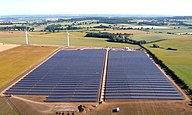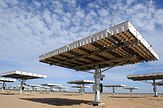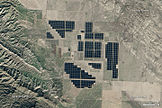From Wikipedia, the free encyclopedia
Template [ edit ] One-cell rows, thin-spaced images
== Title (lead-images) ==
{{main|}}
{| class="infobox" style="width: 300px;"
|-
|[[File:|x150px|]] [[File:|x150px|]]
|-
|[[File:|x150px|]] [[File:|x150px|]]
|-
| colspan=2 | [[File:|300px|]]
| colspan=2 | [[File:Schematic view of asteroid (25143) Itokawa.jpg|300px|]]
|}
|-
|
* Top:
* Middle:
* Bottom:
|}
{{clear}}
Contact binaries [ edit ]
List of exceptional asteroids [ edit ]
The four largest asteroids are 1 Ceres , 4 Vesta , 2 Pallas and 10 Hygiea .
Bottom-left: Ceres is the largest and most massive asteroid and the only one that is a dwarf planet ;Bottom-right: Vesta is the brightest and second-most-massive asteroid. It suffered a crust -penetrating impact approximately one billion years ago.
Georg Wilhelm Steller [ edit ]
Several animals described by and named for Georg Steller, of whom no portrait is known to exist.
original div-containers
List of unnumbered trans-Neptunian objects [ edit ]
List of trans-Neptunian objects [ edit ]
Original pool of potential lead-image (truncated)
15810 Arawn · File:1994 JR1 close-up from New Horizons.gif (19308) 1996 TO66 · File:(19308) 1996 TO66 imaged by NTT cut out.jpg 28978 Ixion · File:ESO asteroid 2001 KX76 phot-27a-01-normal.jpg 47171 Lempo · File:1999TC36-Trujillo-HST.png 50000 Quaoar · File:Quaoar PRC2002-17e.jpg (55565) 2002 AW197 · File:2002AW197-Spitzer.jpg (55636) 2002 TX300 · File:TX300-2009Nov16-04UT.jpg (55637) 2002 UX25 · File:20131105 2002 UX25 hst.png (84922) 2003 VS2 · File:2003VS2-mag20.jpg 90377 Sedna · File:Sedna PRC2004-14d.jpg 90482 Orcus · File:Orcus nasa.jpg Pluto · File:Nh-pluto-in-true-color 2x JPEG-edit-frame.jpg Haumea · File:2003 EL61 Haumea, with moons.jpg Eris (dwarf planet) · File:Eris and dysnomia2.jpg (225088) 2007 OR10 · 25088 Gonggong and Xiangliu by Hubble (2010).png (432949) 2012 HH2 · File:Discovery animation of the TNO 2012 HH2.gif (471143) 2010 EK139 · File:2010EK139-OCKS-KBO3.gif (486958) 2014 MU69 · File:KBO 2014 MU69 HST.jpg File:TheTransneptunians Color Distribution-2005RR43.png File:Planet nine-etnos now.png File:Celestia distant object orbits.png Minor-planet moon (lead-images) [ edit ]
Top: 243 Ida and its moon Dactyl as imaged by Galileo
Middle: Three radar images of asteroid (66391) 1999 KW4
Bottom: (357439) 2004 BL86 left ). Near-Earth encounter of asteroid (136617) 1994 CC right ).
Rubble pile [ edit ]
Top: Near-Earth asteroids 2006 DP14 imaged by DSN ' s radar antena (left) and 2009 FD seen from by the VLT (right).
Middle: Rotating near-Earth asteroid 433 Eros , visited by NEAR Shoemaker from a distance of 200 km.
Bottom: As of 2015, there are 13,534 known NEOs, divided into several orbital subgroups.[1]
Geysers (lead-images) [ edit ] Geysers § Eruptions
Eruption of a geyser (clockwise from top left)
Steam rises from heated water
Pulses of water swell upward
Surface is broken
Ejected water spouts upward and falls back down into the pipe
1. Steam rises from heated water
2. Pulses of water swell upward
3. Surface is broken
4. Ejected water spouts upward and falls back down into the pipe
Leonhard Euler Telescope [ edit ]
Top: The enclosure of the Leonhard Euler Telescope with the higher situated NTT in the background
Bottom: The 1.2-m Leonhard Euler Telescope in its dome at La Silla
The structure of the Sun [ edit ]
Sunspots
Top: sunspot region 2192 during the partial solar eclipse in 2014[2]
Middle: sunspot close-up in the visible spectrum (left) and in UV taken by the TRACE
Bottom: A large group of sunspots stretching about 320,000 km (200,000 mi) across.
The structure of the Sun :
Next-Generation Transit Survey (lead-images) [ edit ]
Top: NGST facility with the VLT (left) and VISTA (right) in the background
Middle: Observation at night and rendering of the facility
Bottom: The array of twelve 0.2-meter robotic telescopes
CHARA array (lead-images) [ edit ]
One of the six telescopes that are part of the astronomical interferometer (top-right)
Aerial view of Mount Wilson with the Hooker telescope, the 60-inch telescope and the CHARA array.
Two of the six light pipes that connect the array to the beam combining lab (bottom-left)
The Operations Center of the CHARA array at Mount Wilson Observatory (bottom-right)
Constellation (lead-images) [ edit ] The constellation of
Orion , one of the most discernible in the night sky, can be seen by the naked eye.
Heliosphere (lead-images) [ edit ]
Top : the heliosphere travels through the interstellar medium (artist's concept):Termination shock : the solar wind collides for the first time with the interstellar medium, slows down and changes direction.Heliosheath : the outer region of the heliosphere; the solar wind is compressed and turbulantHeliopause : the boundary between solar wind and interstellar wind where they are in equilibrium.Bow shock : the shock wave caused by the heliosphere in the direction it travels through the interstellar medium.Bottom-left : water running into a sink as an analogy for the heliosphere and its different zonesBottom-right : the energy of the solar wind's particles drop drastically as the wind slows down at the termination shock
Electric cars (compilation) [ edit ] Amsterdam 06 2015 1616 (2)
Electric cars compilation draft
Top: Lorem ipsum dolor sit amet, consectetur adipiscing elit. Fusce et blandit mauris. Nulla congue ante placerat vestibulum volutpat
Middle: Suspendisse posuere nisl non lorem semper cursus. Morbi sed sem purus.
Bottom: Ut orci dolor, posuere vel lectus quis, lobortis ultricies ipsum. Ut tristique porta orci nec pulvinar.
Luna programme (lead-images) [ edit ]
Star system [ edit ]
Top: The Algol three-star system imaged in the near-infrared by the CHARA interferometer with 0.5 mas resolution in 2009. The shape of Algol C is an artifact.
Bottom-left: Algol A is being regularly eclipsed by the dimmer Algol B every 2.87 days. (Imaged in the H-band by the CHARA interferometer. Sudden jumps in the animation are artifacts.)
Bottom-right: Artist's impression of the orbits of HD 188753 , a triple star system
Astronomical object (lead-images) [ edit ]
Selection of astronomical objects:
Moon Mimas and asteroid Ida with its asteroid moon
Comet Lovejoy and planet Jupiter
The Sun, Sirius A with white dwarf Sirius B, Crab nebulae a supernova remnant
Pulsar, rotating neutron star and artist concept of a black hole
Pleiades an open star cluster and globular cluster
Wirlpool galaxy and galaxy cluster Abell 2744
Superclusters and filaments
Compilation Moon landing [ edit ]
Clickable map of the locations of all successful soft landings on the Moon to date (top). Dates are landing dates in UTC . Except for the Apollo program, all soft landings were unmanned. Luna 2 was the first man-made object to reach the surface of the Moon (bottom-left). Still frame from a video transmission, taken moments before Neil Armstrong became the first human to step onto the surface of the Moon, at 02:56 UTC on 21 July 1969. An estimated 500 million people worldwide watched this event, the largest television audience for a live broadcast at that time.[1] [2]
Satellite flare [ edit ]
Top: a simulated animation of a typical Iridium flare
Bottom: Both images show a iridium flare. The right image also shows comet 17P/Holmes slightly above the tree branch.
Magnitude (astronomy) [ edit ]
Top: Light sources of different magnitudes. A very bright satellite flare can be seen in the night sky.
Bottom: The Hubble Ultra-Deep Field detected objects as faint as 30th magnitude (left). Comet Borrelly , the colors show its brightness over the range of three orders of magnitude.
Comets revisited [ edit ]
Wafer infobox image compilation [ edit ]
Top: polished 12" and 6" silicon wafers. Their crystallographic orientation is marked by notches and flat cuts (left). VLSI microcircuits fabricated on a 12-inch (300 mm) silicon wafer, before dicing and packaging (right).
Bottom: solar wafers on the conveyor (left) and completed solar wafer (right)
Unmanned spacecraft (lead-image) [ edit ]
Top: The unmanned resupply vessel Progress M-06M (upper-left) . Galileo space probe, prior to departure from Earth orbit in 1989 (right) . The unmanned ATV-2 Johannes Kepler approaches crewed space station ISS (lower-left) .
Bottom: Space orbiter Buran was launched, orbited Earth, and landed as an unmanned spacecraft in 1988 (shown at an airshow) .
Image collage Impact Craters [ edit ]
Impact craters in the Solar System:
Top-left: 500-kilometer large crater Engelier on Saturn's moon Iapetus
Top-right: Recently formed 30-m crater on Mars showing a prominent ray system of ejecta [1]
Bottom-left: 50,000 year-old Barringer Crater (Meteor Crater) east of Flagstaff, Arizona, U.S.
Bottom-right: The prominent impact crater Tycho in the southern highlands of the Moon
Image collage Charging Station [ edit ]
Alternative lead image [ edit ] common barycenter (red cross)
Top: barycenter, top right: wobble of star from an edge-on observer, bottom: explanation of doppler shift and radial velocity
Middle:
Bottom:
[ edit ]
Growth of phtovoltaics (revised infobox) [ edit ]
Worldwide Growth of Photovoltaics
Cumulative Capacity in Megawatts [MW
p ] Grouped by Region
[1] : 17 [2] : 15
50,000
100,000
150,000
200,000
Recent and Projected Capacity (MWp )
Year-end
2010
2011
2012
2013
2014
2015
Cumulative
40,336
70,469
100,504
138,856
180,000
234,000
Annual
17,151
30,133
30,011
38,352
40,000
54,000
Growth p.a. 134%
76%
0%
28%
5%
35%
Installed PV in Watts per Capita
none or unknown
0.1–10 watts
10–100 watts
100–200 watts
200–400 watts
400–600 watts
Exponential Growth on Semi-Log Plot
^ Cite error: The named reference epia-2014 was invoked but never defined (see the help page ). ^ Cite error: The named reference iea-pvps-snapshot-1992-2014 was invoked but never defined (see the help page ).
Electric vehicle [ edit ]
Electric vehicles around the world (from top left) :
Electric car . Top-selling Nissan Leaf in AmsterdamHigh-speed rail . China's CRH5 in BeijingElectric trolleybus in São Paulo, Brazil
Electric tram in Vienna, Austria
U.S. manufactured all-electric delivery truck , Australia
BYD K9 , an electric bus with onboard LiFePO4 battery Electric locomotive of the Shatabdi Express in India (see gallery of multiple units) The electric, solar-powered aircraft , Solar Impulse 2, tried to circumnavigate the globe in 2015
Chinese made electric scooter in the Brazilian city of Maringá , and e-Bike , in Manhattan, New York
^ a b Cite error: The named reference Leaf165K was invoked but never defined (see the help page ). ^ a b Cite error: The named reference TopSellingEver was invoked but never defined (see the help page ).
PV systems [ edit ]
Photovoltaic power systems and components:Top: solar string inverter and other BOS components · Solar array on rooftop in Honkong, China · BIPV on balcony in Helsinki, FinlandMiddle: rooftop system in Boston, United States · Westmill solar park in the United Kingdom · Dual axis tracker with CPV modules · Topaz , one of the world’s largest solar power station, as seen from spaceBottom: commercial rooftop PV system of about 400 kWp · Power plant on Mt. Komekura, Japan · Solar PV system on Germany's highest mountain-top
Extremely large telescopes [ edit ]
Largest telescopes [ edit ]
The world's largest optical reflecting telescopes with an aperture diameter of larger than 8 meters (hover with mouse over image)
Native Americans [ edit ] Native Americans American Indian and Alaska Native (2010 Census Bureau)[1] One race : 2,932,248 are registered. In combination with one or more of the other races listed : 2,288,331. Total : 5,220,579.Predominantly in the Western United States American English , Native American languages , Spanish Native American Church Protestant Roman Catholic Russian Orthodox Aboriginal peoples in Canada , Indigenous peoples of the Americas , Metis , Mestizo , Latin Americans














 Touch the Clouds
Touch the Clouds

















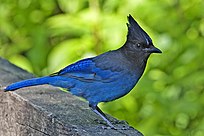




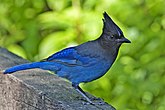






























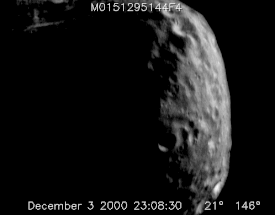


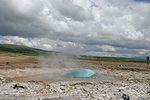
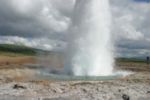




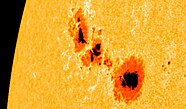
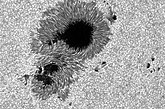












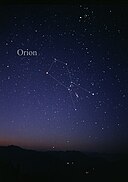






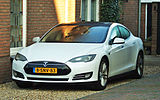










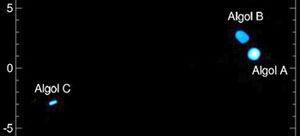


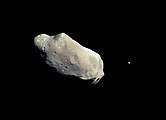
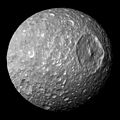

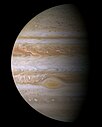





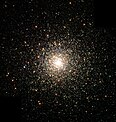
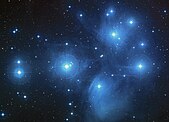

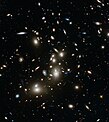




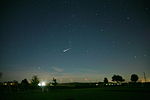







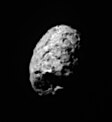
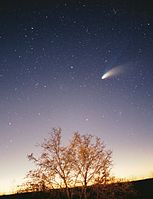















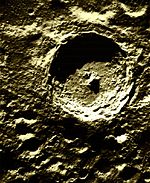




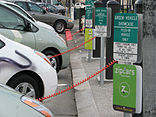







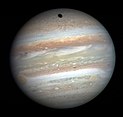

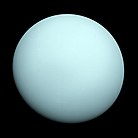



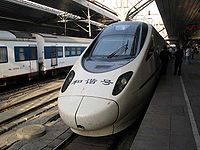
![The Nissan Leaf is the world's top-selling highway-capable all-electric car in history totaling global sales of over 165,000 units by early March 2015.[1][2]](http://upload.wikimedia.org/wikipedia/commons/thumb/c/c7/Nissan_Leaf_aan_Amsterdamse_laadpaal.jpg/225px-Nissan_Leaf_aan_Amsterdamse_laadpaal.jpg)














